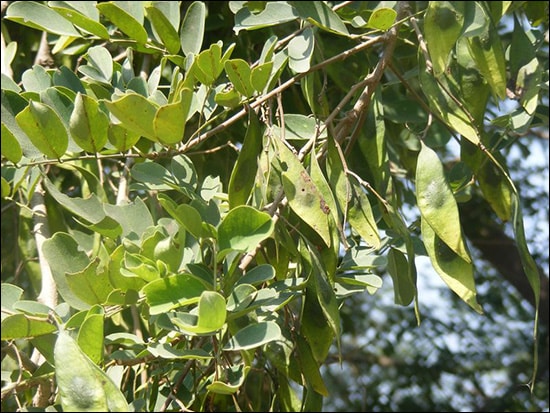Goraksh (Dalbergia Lanceolaria)- Ayurvedic Properties, Effects On Doshas & Dosage
Description
Ayurvedic medicines tend to manage various types of diseases and are a holistic type of system. Its main goal is to maintain the longevity of life, with the help of natural methods. Ayurveda provides the knowledge of how to get rid of diseases, or how to eradicate the diseases from their roots. Ayurveda categorises the different constitutions (five elements like Space, air, fire, water, and earth) into three different doshas (Vata, pitta, and Kapha) and balances them to give proper healthy well-being. This helps the body to maintain the temperament of one’s mind and emotions. As the name indicates Ayurveda helps us to bring rejuvenation to our body and helps to increase our life span. Ayurvedic treatment includes various means to give a healthy life with natural methods like herbal medications, oils, or panchakarma therapies. Ayurveda says humans are part of nature. There are many treatment mediums that are helpful in regaining the equilibrium in the body, there is also a very auspicious herb that is named Goraksh which helps the body in rejuvenation and helps to expel the excess dosha. Let’s discuss its benefits and the uses of the Goraksh herb.

General Information
Goraksh is the herb of a deciduous tree named Dalbergia lanceolaria belonging to the family of Fabaceae. This beautiful tree is harvested for its leaves, fruits, roots, bark, and seeds. This herb is widely used to manage pain, obesity, dyspepsia, leprosy, and diarrhoea. In Sanskrit, this herb is called Goraksh which means who protects the senses, in Hindi it is called gaurakh, takoli, bithuka, in Orissa sujnipatti, in Telugu it is named errpachari, in kannada as belag and in Malayalam it is pulari.
Special Note About This Plant
- This herb is explained by Acharya Priya Vrat Sharma who has given us many books after studying the herbs and formulations. He gives us very deep and most vulnerable information about the different types of herbs.
- Its flowering time is between April and May.
- Its fruiting period is from September to January.
- This herb’s bark consists of 14-15% of tannins and its root is composed of the Lanciolarin chemical in profound form.
- This herb is mainly called the Kapha – Vata shamak so helps as an analgesic, anti-diarrheal, and anti-inflammatory in nature.
Ancient Verse
Shloka
शिरीषपत्रो गोरक्ष: कषायकटुतिक्तकः।
लघुरुष्णः कटुः पाके कफवातविनाशनः।।
वेदनास्थापनः शोथहरस्त्वामविपाचनः।
आमवातेऽग्निमन्ध्ये च सदौर्बल्ये प्रशस्यते।।
Reference – Dravyaguna
Interpretation of Shloka – This herb is consisting of astringent, pungent, bitter in taste, light in digestion, and bitter after digestion, and is very good at pacifying the Kapha, Vata Dosha. This herb is good as an analgesic, anti-inflammatory, and induces digestion. This works on osteoarthritis, reduced digestive fire, and weakness.
Systemic Classification
- Botanical Name – Dalbergia Lanceolaria
- Family – Leguminosae
- Genus – Dalbergia
- Species – D. lanceolaria
Habitat
- This is a deciduous tree, tall and is up to 7 feet long, and thickened.
- The leaves of this plant are 15 cm long and are found in clusters, oblong or ovate in shape, and have short leaflets 9-15, that are rounded and emarginate in nature. There are small veins in the leaves of about 12 in number, in the below part it has small hairy growths but in new leaves, growth is on both sides.
- This is a flowery tree and it gives a beautiful appearance when it is full of flowers. The colour of its flowers is pinkish and a kind of bluish tinge, these are about 3 to 5 inches in length and are found in groups.
- It has some bean growth that is 2 to 4 inches long and is thin on both sides.
- This has 1 to 3 seeds at one time, its bark is unctuous, whitish brown in colour, and has no liquid content so this is known as solid bark.
- This plant is not found in profound states but in India, it is available everywhere mainly near the valleys, hills, or pond areas.
Ayurvedic Properties
- Rasa (Taste) – Katu (Pungent), Tikta (Bitter), Kashaya (Astringent)
- Guna (Quality) – Laghu (light)
- Veerya (Potency) – Ushna (Hot)
- Vipaka (Post digestive effect) – Katu (Pungent)
- Karma (Action) – Balances the Vata and Kapha dosha
- Projyang (Part used) – Panchang (Flowers, bark, fruits, leaves, and roots) are used as seed oil
Effects On Doshas
- It balances the Vata and Kapha dosha due to its ushna veerya.
- Its oil is used as an anti-inflammatory and analgesic.
Practical Uses
- This herb balances the Vata and Kapha dosha due to its ushna veerya.
- This plant is helpful in controlling the pain and is used to enhance the fire and digestion, and is helpful in the pacification of vata dosha.
- This is anti-inflammatory and is good for healing also.
- This helps to increase strength and promotes a healthy body build.
- Its seed oil is used to manage osteoarthritis and rheumatoid arthritis.
- Its leaves are used by heating on the pan and tied to painful areas.
- This is used in decreasing fire, and is used to cure constipation.
- This is used in weakness, fatigue, and for excreting out the waste material from the body like toxins or aggravated doshas.
- This helps in Aampachan and gives the strength to the body for rejuvenating the proper organs and healing them.
Dosage
Its powder can be used in the form of paste and can be in powder form. It can be used in the form of decoction in the quantity of 20 to 30 ml.
Ayurvedic Products
- Gorakhmundi Powder
- Gorakh Avleha



